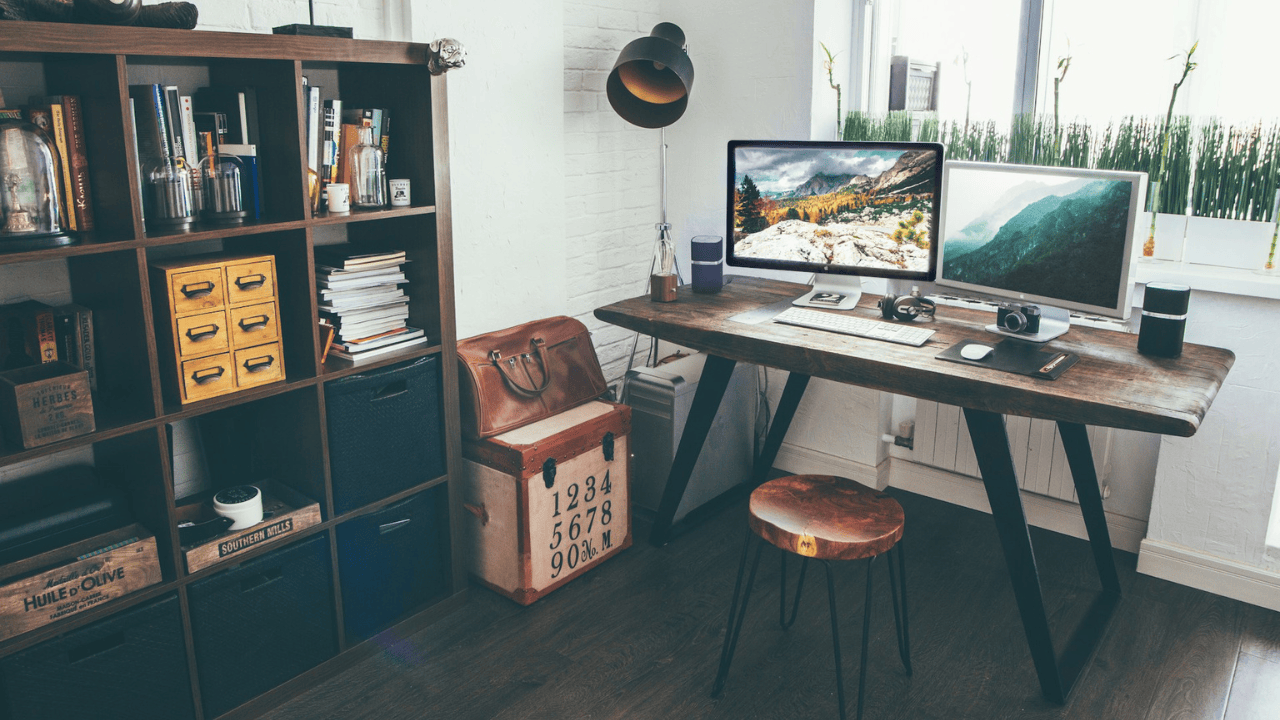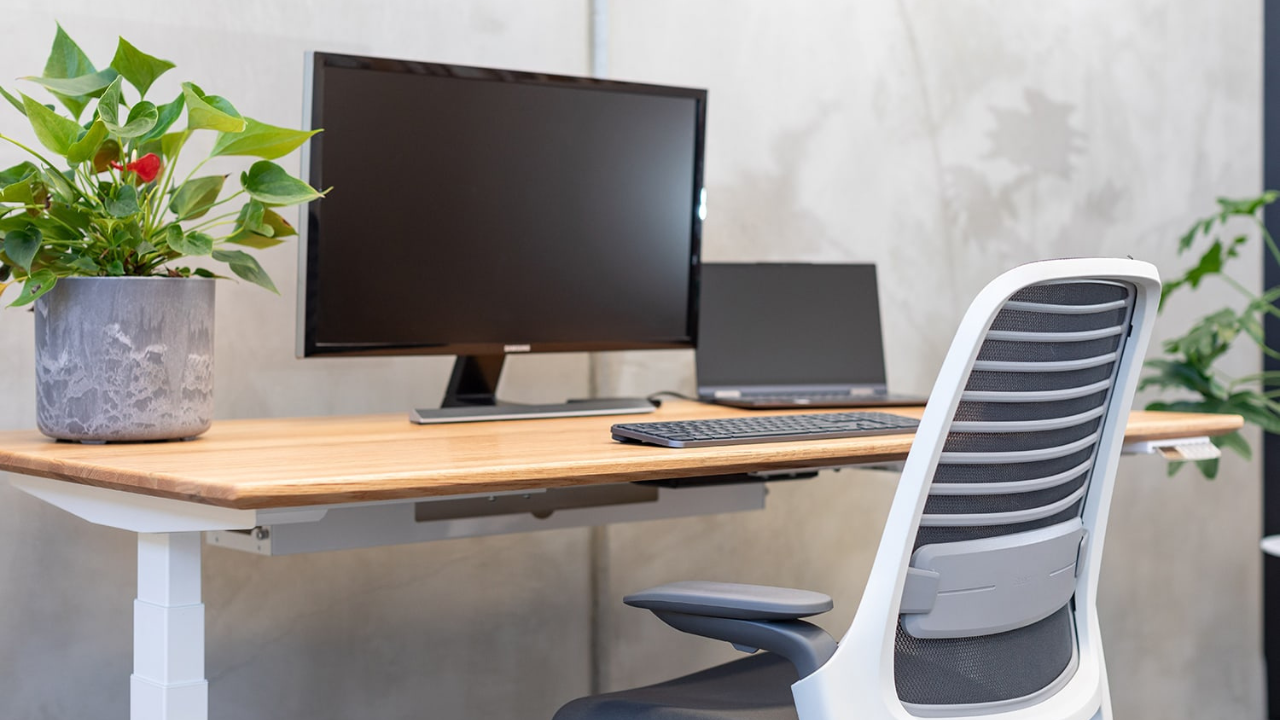One of the often overlooked downsides of remote work is the challenge of setting up your workspace. In a traditional office, professionals design the environment to maximise productivity and well-being for you. But when you work from home, that responsibility shifts entirely to you.
This guide is an overview of my home office lighting experiences and how to balance natural light and artificial sources effectively. The appropriate lighting setup improves your focus drastically.
First Things First
It’s essential to first evaluate your home office space and understand the key factors involved in setting up an effective lighting arrangement. Start by assessing the size and layout of your room. Larger spaces require different light sources, whereas smaller rooms get by with fewer fixtures.
Most home offices require 300-500 lumens per square metre, calculated by multiplying the lux level by the work area (sqm). The lux level is the intensity of light needed. General office work requires 300 lux, while detailed tasks like reading benefit from 500 lux or more.
Here are the four common types of home office lighting available to you when planning your home workspace:
- Natural light: Sunlight is the best light source you can use.
- Ambient lighting: This provides overall illumination for the room.
- Task lighting: Focused lighting, like desk lamps, is used to illuminate specific areas where you work, such as your desk or reading nook.
- Accent lighting: This type of lighting is more decorative and used to highlight specific features of your office.
Good lighting directly affects your productivity and focus. It improves your concentration and efficiency. For instance, bright, cool lighting often boosts alertness and energy, while softer, warmer lighting creates a relaxing atmosphere, helping you wind down after a long workday.
How to Light Your Home Office?
Below, I share four tips to light your home office and create a productive, comfortable, and appealing workspace.
#1 - Natural lighting

Natural light is an important starting point for your home office lighting. Maximising daylight reduces eye strain and creates a more pleasant working environment. Here's how to make the most of it:
- Place your desk near a window to benefit from sunlight, but avoid sitting directly in front or behind it to prevent glare on your screen.
- Use light, sheer curtains to diffuse harsh sunlight while allowing plenty of natural light to fill the room.
- If possible, choose a workspace with windows on multiple sides to maximise natural light and minimise shadows.
I highly recommend choosing a space with access to natural light or daylight when building a home office. Besides lighting, you get the added benefits of fresh air and a connection to the outdoors, which boosts overall well-being and reduces stress during long work hours.
#2 - Complementary artificial lighting
Artificial lighting ensures consistent and balanced illumination in a home office, especially when natural light varies throughout the day. Here’s how to use artificial lighting effectively alongside natural light:
Bulb types

Let's start with bulb types; different bulb types affect the quality and ambiance of the light in your home office or workspace. The most common bulb options are LED, CFL, and halogen bulbs.
LED bulbs are often energy-efficient, long-lasting, and available in various colour temperatures. They are the most popular choice because they can mimic natural daylight and offer adjustable brightness.
Compact Fluorescent Light (CFL) bulbs are also energy-efficient but don't offer as natural a light quality as LEDs. They also flicker over time and aren't ideal for prolonged work periods. In contrast, halogen bulbs provide bright, crisp light that is less energy-efficient and produces more heat.
What is colour temperature?
Colour temperature, measured in Kelvin (K), affects how warm or cool the light looks. For home office lighting, pick a colour temperature that helps you stay focused and productive without hurting your eyes.
Here are example ranges:
- Warm white (2,700K – 3,000K): Ideal for relaxed spaces but not bright enough for a focused work environment.
- Neutral white (3,500K – 4,500K): This range mimics daylight, a crisp, clear light ideal for desk work.
- Cool white (5,000K – 6,500K): Bright and energising for high-precision tasks but too cool or harsh for office work.
When considering the colour temperature, neutral white lighting offers the best balance of comfort and focus. However, if you want a bright, stimulating environment for tasks requiring concentration, you could use cool white lighting around 5,000K in certain task areas.
Layering your lighting

Using a mix of natural and artificial light is most effective when you layer different types of lighting. This approach helps reduce glare and shadows while making the space more comfortable and visually appealing. This is where the types of lighting mentioned above come into play.
Ambient lighting like recessed lights, pendant lights, or flush-mounted ceiling lights provide overall illumination. Task lighting with adjustable lamps lets you control brightness for different times of the day and tasks, while accent lighting like wall sconces, LED strips, or small lamps brings warmth and character to your space while balancing the overall lighting.
Combining natural light with artificial lighting enhances the functionality and aesthetics of a home office. To summarise:
- Choose LED bulbs in the neutral white range.
- Pick the right colour temperature to balance comfort and focus.
- Layer your lighting for versatility, and use dimmers to adjust brightness throughout the day.
With the right mix, you can create a well-lit and productive workspace that works harmoniously with the natural light available.
#3 - Reducing glare

Next on the bill is reducing glare. This works hand-in-hand with light positioning and desk placement. Too much glare causes eye strain and headaches, making it hard to focus. To avoid this, start by positioning your desk so that windows are on the side rather than directly in front or behind you. This setup lets in natural light without shining directly on your screen.
Another effective solution is to use adjustable window treatments like blinds or curtains. This approach allows you to control the amount of natural light coming into the room or workspace throughout the day. I recommend using anti-glare screens on your monitor to cut down on reflections and matte paint and furniture finishes to reflect less light and reduce glare.
To prevent glare from artificial lighting, use desk lamps that provide focused, diffused light to avoid harsh shadows. Indirect lighting, like wall sconces, can create a softer atmosphere. Choosing warm-colored light bulbs can also make your workspace feel more inviting.
#4 - Light positioning
Positioning is the final piece in creating a comfortable home office.
Proper placement of lighting fixtures and office furniture ensures an even distribution of light, avoiding glare on screens and preventing harsh contrasts that often lead to discomfort and reduced focus.
For example, placing lights directly in front of or behind computer screens leads to glare and reflections. Instead, position them to the side or use lamps with adjustable angles. Use room lights to brighten the space evenly and let natural light in to work alongside your lamps.

How to Choose an Office Light?
When choosing the right office light, consider these key factors to ensure your workspace is comfortable and suited to your needs:
- Brightness and lumens: Choose the right brightness level by considering the lumens needed for your workspace.
- Colour temperature: Warm lights are for relaxation areas, cool lights are for focused tasks, and neutral lights are for general use.
- Energy efficiency: Consider the energy consumption of light sources like LED, incandescent, and fluorescent lighting.
- Adjustable lighting: Adjustable lighting offers flexibility in adapting the lighting to different tasks and work hours.
Common Mistakes to Avoid
When setting up your home office lighting, avoiding common mistakes can greatly enhance your workspace. Here are pitfalls to watch out for:
- Ignoring natural or daylight.
- Choosing the wrong colour temperature.
- Relying solely on ambient lighting without adequate task lighting.
- Setting up a fixed lighting arrangement.
- Using outdated or inefficient light bulbs.
- Not cleaning your light fixtures regularly.
- Not using dimmable lights.
These mistakes thwart the process of creating a well-lit, comfortable, and productive home office that meets your needs effectively.

Final Thoughts
Adequate home office lighting is essential for creating a productive and comfortable home office environment. I hope the key factors above help ensure your office is well-lit and conducive to focus and work.
While at it, avoiding the common mistakes outlined will further enhance your workspace, making it easier to work for long periods without eye strain. So, take the time to assess your needs and adjust your lighting setup accordingly.








